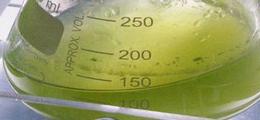Genome research on bacteria was started already in 1999 by sequencing the genomes of Sinorhizobium meliloti 1021 and Corynebacterium glutamicum ATCC 13032. At the beginning, nine bacterial genomes were sequenced by using capillary sequencers and were published in reputed journals (Table 1). These genome projects were financed by the Federal Ministry of Education and Research (BMBF) within the framework of the project “Genome Research on Bacteria Relevant for Agriculture, Environment, and Biotechnology”. A necessary requirement for this project was the establishment of the technology platforms Genomics and Bioinformatics. In the meantime, next generation sequencing accelerated and cheapened sequencing of bacterial genomes considerably. In general, the genome of every biotechnologically interesting bacterial strain can be sequenced before physiological, biochemical or molecular-biological analyses are started. A variety of researchers of the two technology platforms Genomics and Bioinformatics are participating in the sequencing of genomes and the analysis of the sequence data.
Table 1: Overview of bacterial genomes sequenced at the CeBiTec of Bielefeld University by using capillary sequencers
| Bacterial strain |
Genome size [Mb] |
Reference |
Citations* |
|
- from agriculture |
|||
| Sinorhizobium meliloti 1021 | 6.68 | Galibert et al., Science (2001) | 1171 |
| Azoarcus sp. BH72 | 4.38 | Krause et. al., Nature Biotechnol. (2006) | 223 |
| Xanthomonas campestris pv. vesicatoria 85-10 | 5.18 | Thieme et al., J. Bacteriol. (2005) | 340 |
| Xanthomonas campestris pv. campestris B100 | 5.50 | Vorhölter et al., J. Biotechnol. (2008) | 217 |
| Clavibacter michiganensis pv. michiganensis | 3.30 | Gartemann et al., J. Bacteriol. (2008) | 138 |
|
- from the environment |
|||
| Alcanivorax borkumensis SK2 | 3,12 | Schneiker et al., Nature Biotechnol.(2006) | 332 |
|
- from industry |
|||
| Corynebacterium glutamicum ATCC 13032 | 3.28 | Kalinowski et al., J. Biotechnol. (2003) | 913 |
| Corynebacterium jeikeium K411 | 2.46 | Tauch et al., J. Bacteriol. (2005) | 171 |
| Sorangium cellulosum So ce56 | 13.01 | Schneiker et al., Nature Biotechnol.(2007) | 377 |
* Number of citations from Google Scholar as of 09/20/2019.
In the meantime, genome sequencing was extended to the genomes of yeasts and fungi. For example, the genome of the yeast Pichia pastoris CBS7435 and the genome of the fungus Rhizoctonia solani AG1-IB were analysed. The research was carried out by A. Schlüter and his coworkers.
Sequencing of the Chinese Hamster was a leap forward in the direction of large genomes. The genome of the Chinese Hamster is of high interest for biotechnology since this animal was the parental organism for the establishment of CHO cell lines which play an important role for the production of antibodies for medical use. The sequencing of the hamster genome was financed by the companies Novartis Pharma AG and Pfizer, Inc. The chromosomes of the Chinese Hamster were separated and afterwards sequenced by using the Illumina technology. The sequence data were afterwards assembled and annotated using the compute cluster of the technology platform Bioinformatics. The project was supervised by K. Brinkrolf, whereas T. Noll , A. Tauch and A. Goesmann were involved as additional researchers from Bielefeld. The project was carried out in close cooperation with the group of N. Borth from the University of Natural Resources and Life Sciences, Vienna, Austria. In the meantime, we performed genome research on CHO cell lines dealing with transcriptome and microRNA analyses (Becker et al., J. Biotechnol. 156, 2011: 227 – 235 ; Hackl et al., J. Biotechnol. 153, 2011: 62 – 75).



